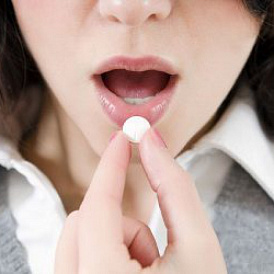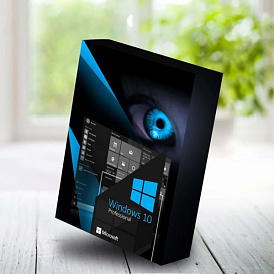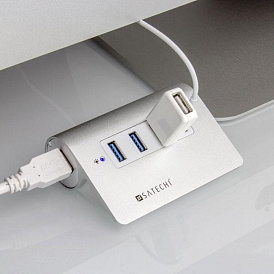Compare Amlodipine and Bisoprolol | Which is better and what is the difference
Hypertension, the bulk of the world's population suffers. The cause, pathology of the cardiovascular system, are many factors, both internal and external origin. According to the latest statistics, about 60-67% of people aged 50-52 years suffer from hypertension, and 10% of people over 35 years old. The latest indicators vary from year to year, because young people are sleep deprived, often exposed to increased stress, excessive physical or mental work. Plus, the rejuvenation of hypertension affects unhealthy food, that is, full GMO fast food, a high degree of preservatives, salt, as well as many long-term storage products.
Increased pressure can be cardiogenic, psychotropic (with a lesion of the central nervous system) and a combined type, according to its course: an abrupt, constant form. To eliminate the pathology necessary antihypertensive drugs. Amlodipine and bisoprolol are considered to be effective last-generation drugs. Our analysts of Excel magazine offer to find out which of them is more effective by describing the most important information: Amlodipine or Bisoprolol: what is the difference and what is better.
Amlodipine

Amlodipine, included in the group of selective-type antihypertensives, it blocks class II calcium channels. The mechanism of action is to relax the smooth muscles of the vascular system. Under the influence of the drug expands the capillary network. This reaction leads to a decrease in peripheral vascular resistance (OPSS), which reduces the pressure in the total vascular network. The second advantage of the drug - it regulates heartbeat, reducing the risk of reflex tachycardia.
Normal work of the heart muscle does not require increased metabolism and high oxygen consumption, that is, amlodipine creates normal conditions for the rhythmic contraction of the myocardium and its sufficient nutrition. The latter is due to the expansion of the coronary arteries, which provide the muscle with a certain amount of nutrients and oxygen. Even with myocardial ischemia, Amlodipine acts accordingly, contributing to the rapid rehabilitation of myocardial areas affected by ischemia. The drug, namely its active substance, removes coronary artery spasms, improving blood flow to the heart ..
Pharmacokinetics
Amlodipine is available in the form of tablets of 5 mg and 10 mg. Calcium channel blockers are the active ingredient amlodipine besylate. Namely, this substance lowers systolic and diastolic pressure, in parallel expands the diameter of the peripheral capillaries, the vessels feeding the heart. Its absorption through the gastrointestinal tract is slow, one hundred percent. The drug does not undergo neutralization either in the gastrointestinal tract or in the liver, it binds completely to proteins, only 2% is excreted by the kidneys in an undisturbed form. Eating does not affect the adsorption of antihypertensive drugs. The active substance acts on the smooth muscles of the vessels, expanding them.Thanks to the active substance, a sufficient amount of blood circulates through the vessels, which satisfies the nutritional demand of the myocardial tissues, preventing oxygen starvation and ischemization. The drug is excreted by the kidneys and liver in the form of metabolites in 48-65 hours, depending on the general condition of the patient and on his age.
Recommendations
Antihypertensive + antianginal agent is used exclusively in the treatment of cardiological diseases. Our staff conducted research on the use of Amlodipine: 50% of the studied respondents or patients with a diagnosis of hypertension of the stable type are treated with this antihypertensive, and are satisfied with the results of treatment.
Amlodipine is recommended for:
-
Hypertension of any type.
-
Angina pectoris (stable, unstable type, metal prints).
-
Ischemia of the heart.
-
Heart failure.
We analyzed that the constant use of Amplodipine in case of stenocardia (5 or 10 mg / day) prevents its acute attacks, allowing the heart to work in normal mode. The result of this action is: increased physical exertion with small interruptions, in which patients feel fit. Plus, the blood pressure will be 120/80 or 130 / 90mm Hg, depending on the age and condition of the cardiovascular system and related diseases such as diabetes, rheumatism or Grave disease. If the daily dose of 5 mg does not lower the pressure, the dose rises to 10 mg / day. In this case, it is advisable to measure blood pressure 3 times a day: in the morning, at lunch and in the evening, in order to prevent a hypertensive or hypotonic crisis. There is another way: to study everything about “Amlodipine” or “Bisoprolol”: what is the difference and what is better, and change the medicine for another, more gentle and effective.
Contraindications
The antihypertensive drug does not have a specific list of contraindications; it is almost ideal for treating hypertension and vasospasm spasms. Our journalists have identified only a few cases in which Amlodipine is not recommended due to certain pathologies of the body.
Contraindications for the use of Amlodipine are:
-
increased allergic background;
-
low blood pressure or hypotension;
-
fainting or collapse;
-
pregnancy and lactation;
-
cardiogenic shock;
-
urolithiasis disease;
-
renal failure.
With the diagnosis of myocardial infarction, aortic stenosis, nephrolithiasis grade 1-2, diabetes mellitus type 2-3, as well as in patients with systemic diseases, Amlodipine is prescribed only after instrumental, laboratory examination.
An important point! Antihypertensive medication is recommended only in combination with other medicines. Applying it as a base or in a single form, it can destroy the structure of the muscle fibers of the heart. To prevent such situations, it is more efficient to find out everything about Amlodipine or Bisoprolol: what is the difference and which is better, and change the medications.
Side effect
Amlodipine has a small list of adverse reactions. They depend on the general condition of the patient, on his allergic background, immunity, chronic diseases of organs and systems.
After administration of the drug, unexpected reactions may occur in the systems:
-
cardiovascular: low limb pastos, heart palpitations, reddening of the skin of the face and neck, and overdosing can lead to hypotension, shortness of breath, heart rhythm disturbances and collapse;
-
Gastrointestinal: nausea, pain in the intestines, diarrhea, colitis;
-
CNS and sympathetic innervation: migraines, general weakness, drowsiness, dizziness; changing the sensitivity of certain skin areas.
In people with increased reactivity to allergens, the drug causes a rash, red heel, rarely anaphylactic shock.Long-term use of the drug leads to spasms of the muscles of the lower and upper extremities, as well as intestinal colic, the formation of constipation, exacerbation of proctitis, sigmoiditis, hemorrhoids.
Bisoprolol

The drug consists of a selective group of beta-blockers. This is a drug of a selective series, the active substance of which binds to β1-adrenoreceptors, blocking the action of catecholamines, that is, adrenaline and noradrenaline. Bisoprolol is a basic therapeutic agent that is included in the treatment regimen of hypertensive disease of any type (initial, spasmodic, permanent, combined form) and of any origin (cardiogenic, psychotropic, mixed type). A detailed description of the antihypertensive medication will help in solving the problem: "Amlodipine" or "Bisoprolol": what is the difference and which is better?
Pharmacokinetics and pharmacodynamics
The basis of bisoprolol in the form of tablets of 5 mg and 10 mg, is the active substance of bisoprolol fumarate. By blocking catecholamines, it lowers systolic and diastolic pressure, dilates blood vessels, relieves spasms, regulates heart rate. That is, it has antianginal, antiarrhythmic and hypotensive properties. The pressure decreases due to the expansion of blood vessels and a decrease in blood volume. The full hypotensive effect is observed only on day 3 or 5, and its persistent effect appears after 1-1.5 or 2 months. Bisaprolol, reduces the risk of oxygen starvation, regulates the innervation of the heart, eliminating ischemia, arrhythmia and hypertensive crisis. According to our research, the hypotensive drug is 98% absorbed by the gastrointestinal tract, then binds to blood proteins, excreted in the form of metabolites by the kidneys and liver.
Indications for use bisoprolol
Selective antihypertensive medication has its own characteristics: a single morning dose is recommended 15-20 minutes before eating. It is not recommended to chew the tablets, they should slowly dissolve in the stomach, and accordingly be fractionally absorbed, this is the effectiveness of the hypotensive. Absorption completely can cause adverse reactions such as pain in the stomach, dizziness, as well as a sharp drop in pressure with its subsequent sharp rise.
Indications for the use of bisoprolol are:
-
Hypertonic disease.
-
Coronary heart disease.
-
Heart failure.
After receiving diagnostic studies of instrumental and laboratory nature, the doctor prescribes a certain dose, which individually should be suitable only for one patient. With initial hypertension, the dose is exactly 5 mg / day, other forms with a high pressure index require an increased dose (from 10 mg to 20 mg). The dosage is chosen only by the attending physician or cardiologist, it is not recommended to take the medicine yourself.
Contraindications
If the patient suffers: allergies, acute heart failure, bradycardia, bronchial asthma or diabetes mellitus - the drug is contraindicated. Cardiogenic shock, pulmonary edema and severe hypotension join the list of contraindications. Pregnancy and childhood, plus breastfeeding, are also contraindications.
Degree of effectiveness and distinctive properties
The medicaments described above are cardiological, they are widely used in therapeutic schemes of hypertension of any etiology, angina pectoris, arrhythmias, and heart failure. Drugs require a specific scheme of administration: in the morning, if the drug is from the group of beta-blockers, in the morning and in the evening, if the drug is from a number of calcium inhibitors. Effectiveness is felt after one month of treatment. Observing the rules of therapy, plus, taking a certain dose, the patient will quickly recover.
Important! It is strictly forbidden to engage in self-treatment, you can reach a heart attack or anaphylactic shock, as well as irreversible side effects with a fatal outcome!
Differences of antihypertensive drugs:
|
Properties |
Amlodipine |
Bisoprolol |
|
Famacokinetics |
Calcium channel inhibitor of the second class. |
Catecholamine inhibitor (epinephrine and norepinephrine). |
|
Indications |
Hypertension, heart failure and myocardial ischemia. |
The indications are similar to Amlodipine. |
|
Contraindications |
Severe diabetes mellitus, renal failure |
Allergy, bronchial asthma, obstructive bronchitis, liver disease. |
|
Administration method |
Twice a day: in the morning and in the evening, regardless of the meal hours. |
Only in the morning, 15-20 minutes before meals. |
|
Side effects |
Muscle spasm, intestinal colic. |
With an overdose of migraine, nausea and collapse. |
|
Vascular pathology |
It is recommended. |
Contraindicated. |
|
Efficiency |
Weaker. |
Stronger. |
|
Mode of application |
As part of combination therapy. |
Monotherapy |
|
Compatibility with other drugs |
Compatible by 90%. |
Compatible by 2%. |
These medicines have a direct effect on the vessels and the heart. After the treatment course, cardiac activity improves, blood pressure stabilizes, arrhythmia disappears. The drugs are included in the group of the strongest hypotensive, therefore, it is accurate to define - “Amlodipine” or “Bisoprolol”: what is the difference and what is better is impossible. By observing different categories of patients for a long time, one of these two drugs is known to be more suitable. The dosage is prescribed by a doctor, it is individual for each patient. After the appointment of the patient is observed inpatient or outpatient. In the case of side effects, the drug is canceled, another is prescribed.
Summary
Hypertension is the most common in the world; therefore, pharmacologists have developed drugs for its treatment. The main point in therapeutic therapy is the regular administration of antihypertensives. After a sufficient accumulation of active substances, the heart rhythm is normalized, the pressure reaches normal parameters, the vessels push a sufficient amount of blood enriched with nutrients and oxygen throughout the network. Regular intake reduces the risk of ischemia leading to heart attack or hemorrhagic stroke. Our experts of Expertology magazine described in detail the information: “Amlodipine” or “Bisoprolol”: what is the difference and what is better, and the choice remains for the doctor.









